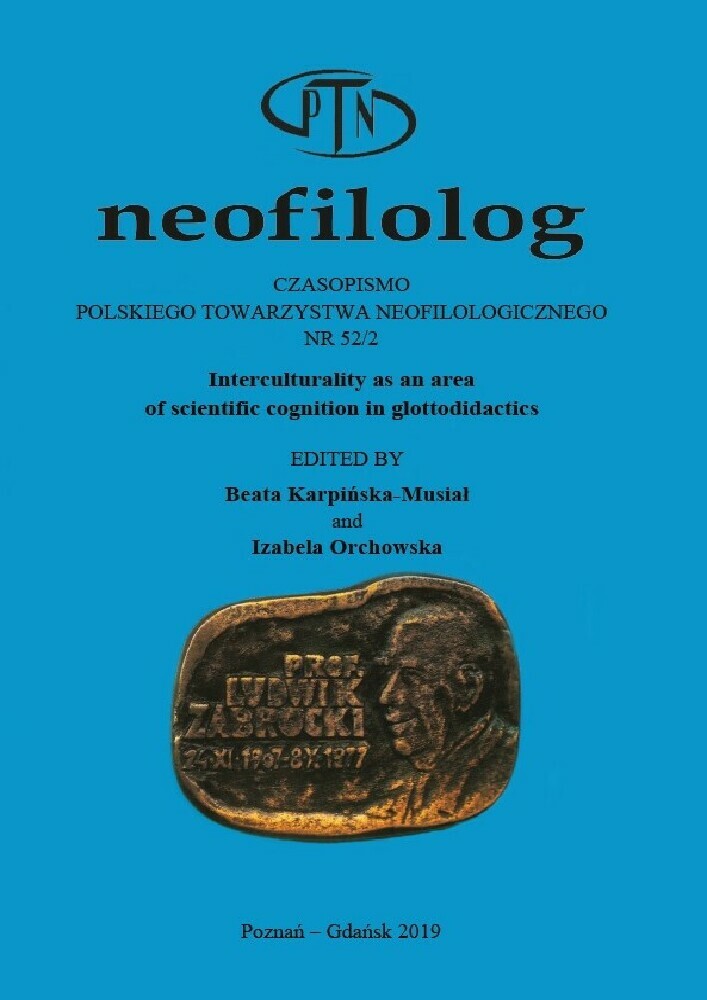Abstract
Second language education (SLE) must remain open to developments in the world if it is to be relevant to those who have an investment in it: learners, teachers and researchers. However, the broadening of the in-terdisciplinary nature of SLE that may occur because of this is not with-out its problems. New areas will bring ideas and terminology that will make SLE as a discipline even more complex. In addition, the ideas and terminology may be disputed in the fields from which they originate thus compounding the problem of complexity. The article looks at the example of the performative in SLE and how it supports an approach that is interdisciplinary and intercultural. It also looks at some of the problems this causes: the implications of implementing an SLE practice that is performative, the fact that there are different performative prac-tices, as well as variance between seemingly similar performative prac-tices because of national and cultural differences. The article concludes with the description of two studies which show the complex nature of performative SLE as praxis.References
Bańczerowski J. (1975), Is Metaglottodidactics Necessary? (in) “Glottodidactica”, No. 8, pp. 21-26.
Blaszk M. (2016), An inquiry into happening in school education: some of the questions it poses to teaching English as a foreign language in schools (in) Stanulewicz D., Janczukowicz K., Rocławska-Daniluk M. (eds.), Language education: controversies, observations and proposals. Frankfurt am Main: Peter Lang, pp. 199-214.
Blaszk M. (2017), Happening in Education – Theoretical Issues. Frankfurt am Main: Peter Lang.
Council of Europe (2001), Common European Framework of Reference for Lan-guages: Learning, teaching, assessment. Cambridge: Cambridge University Press.
Crutchfield J., Schewe M. (2017), Introduction: Going Performative in Intercul-tural Education. International Contexts, Theoretical Perspectives and Models of Practice (in) Crutchfield J., Schewe M. (eds.), Going Performa-tive in Intercultural Education. International Contexts, Theoretical Per-spectives and Models of Practice.Bristol: Multilingual Matters, pp. xi-xxv.
Dakowska M. (2014), O rozwoju dydaktyki języków obcych jako dyscypliny naukowej. Warszawa: Wydawnictwo Uniwersytetu Warszawskiego.
Domańska E. (2007), „Zwrot performatywny” we współczesnej humanistyce (in) “Teksty Drugie”, No. 5, pp. 48-61.
Geertz C. (1973), The Interpretation of Cultures. New York: Basic Books.
Goffman E. (1959), The Presentation of Self in Everyday Life. New York: Anchor Books.
Frimberger K. (2017), The Ethics of Performative Approaches in Intercultural Education (in) Crutchfield J., Schewe M. (eds.), Going Performative in Intercultural Education. International Contexts, Theoretical Perspec-tives and Models of Practice. Bristol: Multilingual Matters, pp.21-40.
Garoian C.R. (1999), Performing Pedagogy: Toward an Art of Politics. Albany: State University of New York Press.
Karpińska-Musiał B. (2015), Międzykulturowość w glottodydaktyce. Gdańsk: Wydawnictwo Uniwersytetu Gdańskiego.
Kirby M. (1966), Happenings: An Illustrated Anthology. New York: E.P. Dutton & Co., Inc.
Królica, M. (2006), Drama i happening w edukacji przedszkolnej. Kraków: Oficyna Wydawnicza Impuls.
Layzell R. (1993), Live Art In Schools. London: The Arts Council of Great Britain.
Maley A., Duff A. (1987), Drama Techniques in Language Learning: A Resource Book of Communication Activities for Language Teachers. Cambridge: Cambridge University Press.
Morawski S. (1971), Happening (2). Rodowód – charakter – funkcje (in) “Dialog”, No. 10, pp. 117-144.
Pawłowski T. (1982), Happening. Warszawa: Wiedza Powszechna.
Rintoul D. (2011), Drama workshops attended by the author. Between Festival, 19-21 May. Sopot, TeatrWybrzeże – ScenaKameralna.
Schechner R. (1982), The End of Humanism: Writings on Performance. New York: Performing Arts Journal Publications.
Sobkowiak P. (2015), Interkulturowość w edukacji językowej. Pożnan: Wydawnictwo Naukowe UAM.
Turner V. (1957), Schism and Continuity in African Society: A Study of Ndembu Village Life. Manchester: Manchester University Press.
Wilczyńska W., Michońska-Stadnik A. (2010), Metodologia badań w glottodydaktyce. Wprowadzenie. Kraków: Avalon.
License
Copyright (c) 2019 Neofilolog

This work is licensed under a Creative Commons Attribution-NoDerivatives 4.0 International License.
Authors
Authors of texts accepted for publication in Neofilolog are required to complete, sign and return to the Editorial team’s office the Agreement for granting a royalty-free license to works with a commitment to grant a CC sub-license.
Under the agreement, the authors of the texts published in Neofilolog grant Adam Mickiewicz University in Poznań a non-exclusive, royalty-free license and authorize the use of Attribution-NoDerivatives 4.0 International (CC BY-ND 4.0) Creative Commons sub-license.
The authors retain the right to the free disposal of the work.
Users
Interested Internet users are entitled to use works that have been published in Neofilolog since 2017, under the following conditions:
▪ attribution – obligation to provide, together with the distributed work, information about the authorship, title, source (link to the original work, DOI) and the license itself.
▪ no derivatives – the work must be preserved in its original form. Without the author's consent, it is not possible to distribute the modified work in the form of translations, publications, etc.
Copyrights are reserved for all texts published since 2017.
Miscellaneous
Adam Mickiewicz University in Poznań retains the property right as a whole (layout, graphic form, title, cover design, logo etc.).

